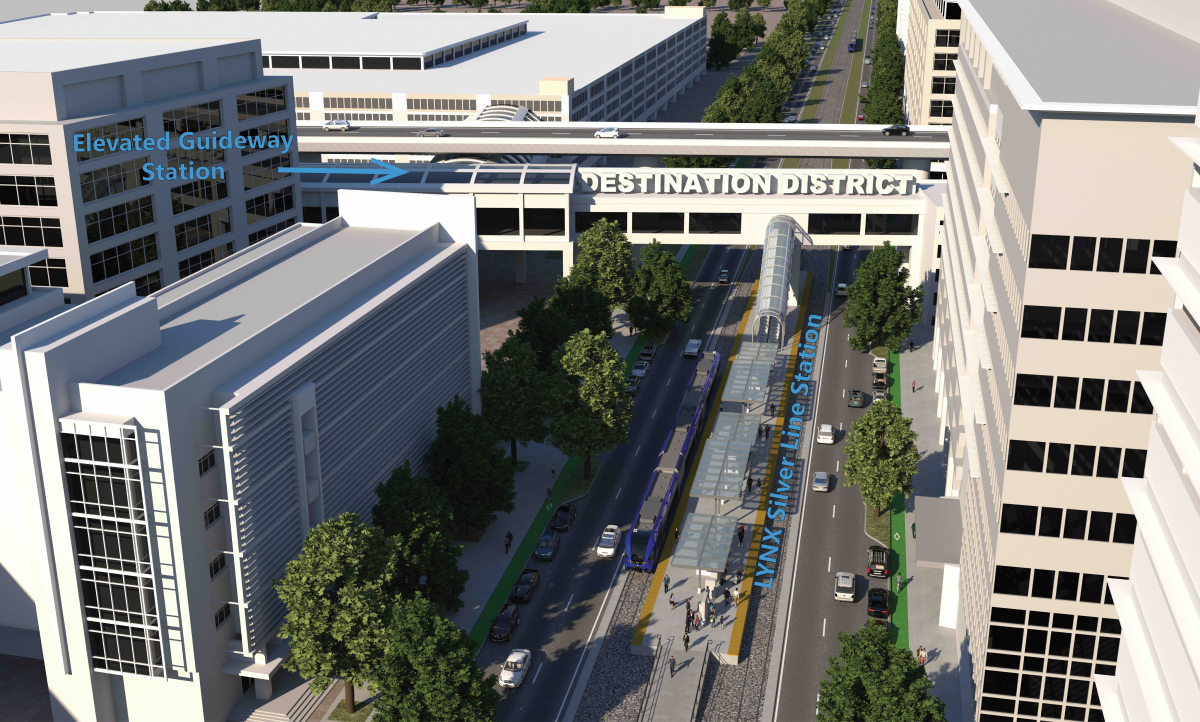
For more than five years CLT has been pulling together property and plans to build a new front door to the Airport. Known as the Destination District, this commercial development will change the landscape at the Airport’s I-85 entrance way and give the area an economic boost.
“It’s going to be a new heart of the Airport city as we continue to see growth at Charlotte Douglas,” said Stuart Hair, CLT’s economic and community affairs director. “We’re building a destination, a central business district or downtown of the airport city, with all of the things you expect in a downtown clustered together.”
Planners envision a bustling commercial development with office space, a conference center and hotels, parking facilities, gas stations and restaurants. The 500 acres of land located north of the Airport includes both private property and property owned by the Airport. It’s bordered by Interstate 85, Billy Graham Parkway, Wilkinson Boulevard and Interstate 485.
The timeline for actual development is unclear, as the Airport and the business community continue to assess the impact of the COVID-19 pandemic on the local economy. But businesses that used to sit on some of the property – a concrete plant, an adult night club and an aged convenience store – are closed, and the Aviation Department is working to clear the land in preparation for redevelopment.
Last year, the North Carolina General Assembly allocated recurring funding for capital improvement projects at the state’s commercial airports using money generated from car rental taxes. The Aviation Department used $25 million from that fund to purchase some of the Destination District property in anticipation of spurring more economic activity in the area.
This commercial district will bring jobs requiring all skill levels – from entry-level skills to advanced degrees, Hair said. “We’re talking with multiple businesses about locating their offices in the Destination District. We already know that there will be demand for various skill sets.”
The initiative’s first major success was the opening of the Amazon Robotic Fulfillment Center in October 2019. At its peak during Christmas, the fulfillment center employed 3,000 workers. The 2.4 million-square-foot facility, located on 100 acres once owned by the Airport, includes a state-of-the art robotics sorting warehouse and distribution center.
It’s a perfect fit for land that was once vacant. “Not only is it about reusing land that we own in a compatible manner, but it’s about providing opportunities to all our communities,” Hair said.
Infrastructure will play a role as well. CLT is proposing a dedicated road off I-85 that will bring drivers directly to Airport parking. There are also plans for a Silver Line light rail station and potential automated people mover connecting the Destination District to the terminal.
The Airport is working with other city departments, North Carolina Department of Transportation, private businesses and private developers to create a refined Destination District Central Transportation and Land Use Plan for dynamic growth of the region.
“We’re really creating a vision for this development,” Hair said. “We have a couple different projects that are actively in the works, and we expect some exciting news to come out of those projects in 2020.”
The Airport plans to break ground on new projects within the Destination District in roughly three to five years, as it recovers from the COVID crisis. In 10-plus years, the initiative is expected to come into fruition.
“The Silver Line plans to be active for operational service within 10 years,” Hair said, “and so the light rail service from Uptown coming fully online will really catalyze a lot of these growth opportunities and create a great synergy for development.”
While the Aviation Department’s goal for the Destination District – like all its development projects – is to find compatible reuse of airport-area land while furthering its mandate to be financially self-sufficient, the city’s role in the project is still unclear. The Aviation Department will pursue various options including reselling or leasing the land, public-private partnerships, and potentially city-developed projects.